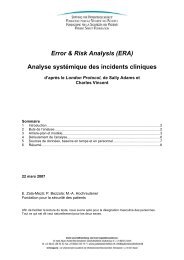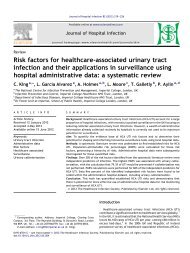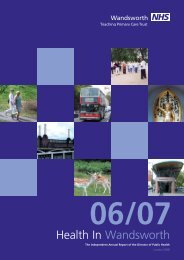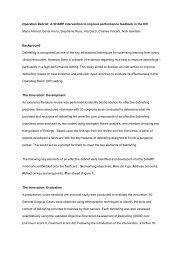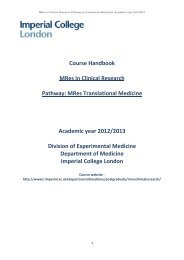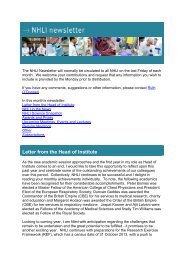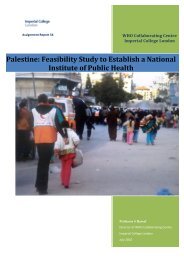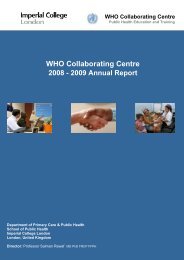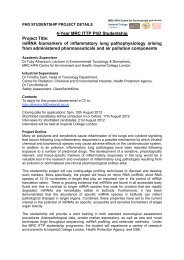QOF Plus Year 1 - Imperial College London
QOF Plus Year 1 - Imperial College London
QOF Plus Year 1 - Imperial College London
Create successful ePaper yourself
Turn your PDF publications into a flip-book with our unique Google optimized e-Paper software.
Executive summaryIntroductionPrevious work has highlighted several limitations of the national Quality and Outcomes Framework (<strong>QOF</strong>)including insufficient focus on health outcomes, primary prevention, prioritised local health needs andbenefits. <strong>QOF</strong> may not encourage practices in reaching the more challenging patients, as practices do notreceive further incentives once they have received the upper payment threshold. It is anticipated thatintroduction of a local <strong>QOF</strong> will help address these limitations.AimsThis document describes a joint venture by NHS Hammersmith and Fulham and the Department ofPrimary Care and Social Medicine at <strong>Imperial</strong> <strong>College</strong> <strong>London</strong> to design and develop a local <strong>QOF</strong> forHammersmith and Fulham (<strong>QOF</strong>+) which is in line with current national guidance, developed through theprocess of effective clinical engagement and which aims to have a greater emphasis on prevention,address local needs, accelerate improvement and reduce inequity.MethodologyEngagement with local practices and other local provider services, feedback from patients and discussionswith national and international experts in health care quality improvement provided insights whichinformed the development of the scheme.A number of existing <strong>QOF</strong> indicators were identified as candidates that might benefit from additionalincentivisation through the provision of revised upper targets. Indicator selection was weighted towardsthose whose attainment confers significant potential health benefits at a population level and wherecurrent attainment in Hammersmith and Fulham is below that seen nationally.Potential sources for new indicator areas were identified and prioritised on the basis of being both localand national priorities. These were subjected to a structured consultation with local stakeholders to selectareas for indicator development for the first year of the scheme through a consensus process.Literature reviews of the evidence base were undertaken for each selected indicator area to informdevelopment of indicators.Proposed new indicators were assessed using the Organisation for Economic Cooperation andDevelopment (OECD) criteria of importance, scientific soundness and feasibility. Each indicator was alsoassessed for clarity. This assessment was informed by the views of local practices, a local stakeholderpanel (through a structured consultation with the aim of achieving consensus for the clinical and recordsdomains), local provider services and national and international experts in the proposed indicator areas.



